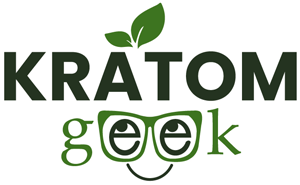The internet has changed everything since its advent. Access to the service allowed small, independent companies to prosper. And it enabled starter publications and digital media companies to rival mainstream media. Most of the newly formed organizations rely more heavily on tabloid stories than they do actual journalism. But sensationalism brings in larger audiences. So that corner of the market continues to rival its counterpart. And the mainstream media broadcast companies have followed in those footsteps, providing more opinion pieces over the reporting of quality press. And at times, it has become difficult to distinguish one from the other.
It’s not the first time that a news station has used deceit to portray kratom as a dangerous product. Recently, another station broke a story about a drug dealer busted for selling fentanyl. And the reporter made sure to mention that detectives found a small amount of kratom inside the home. Now, the kratom had nothing to do with the story or the criminal case. Yet, the station felt it was necessary to bring up the natural supplement and provide misinformation about the properties of the plant. The media relies on sensationalism to sell stories. But the clickbait material results in poorly researched and inaccurate reporting. And that makes people distrust the news. So, in all actuality, most news media platforms are risking their future viewership for a few more immediate views to tabloid material. And in 2020, one news outlet in South Dakota followed the trend of yellow journalism.
KELOLAND News Provides Fake News to Viewers
KELOLAND News, a television station in Sioux Falls, South Dakota, put out a hit piece on kratom products a few months ago, touting misinformation about the kratom plant to the general public. The broadcast company titled the story “Kratom overdose deaths on the rise.” It was a prelude to the next week’s story where the station covered the case of a 37-year-old man that had a history of addiction to heroin and crystal meth. Instead of focusing on those dangerous substances, the station decided to go in-depth about kratom usage because he dabbled with the supplement a year prior.
After overdosing in 2018 on prescription drugs, the man had multiple strokes and found himself in a coma. The doctors even presented a copy of her son’s brain scan to his mother, stating the brain damage shown in the results “had developed over the years of abuse” from his addiction to meth and heroin.
He recovered and found himself on the wrong side of the law when he robbed a liquor store. Due to the pandemic, the system let him out. But his addiction for the past 14 years finally caught up to him. He overdosed in a friend’s bathroom. His friend left him for dead in a fire-station parking lot. The report never indicates that he overdosed on the large amounts of illicit drugs he had taken. Instead, it manipulates the viewer to believe kratom was the culprit from the way the station edited the story.
Another Report Provides Half-Truths
The KELOLAND news station continued its misguided argument against kratom in another piece it aired for the public. Fortunately, the reporter allowed for both sides of the story to accompany their discussion, giving a kratom consumer and representatives from the American Kratom Association (AKA) an opportunity to have a voice in the subject.
One of the reporter’s arguments against kratom was that the products are unregulated, which is the case in plenty of states. However, the kratom industry has tried to work with several states to pass a version of a Kratom Consumer Protection Act (KCPA) that safeguards the consumer. At the moment, four states worked alongside the American Kratom Association (AKA) to create legislation for their constituents. And the AKA is trying to get Congress to pass a version of the KCPA on the federal level. So the South Dakota legislators should work with the AKA to create a KCPA in their state to protect citizens from a lack of regulation.
The station could have spent time covering that scenario, but it chose instead to focus on the misinformation provided by the FDA for the majority of its report. The station gave kratom advocates a small window to get its message in front of the public. But the piece mainly steered in the direction of anti-kratom rhetoric. And it ended the segment setting up for another story that the station planned to air the following night, which claimed that a guy overdosed on kratom earlier in 2020.
The Reporters Are Not Concerned With Scientific Research
KELOLAND News provided its viewers with fallacious reports about kratom as an orchestrated hatchet job. It needed to put kratom in a bad light. The premise culminated in a story the news station aired at the end of September 2020. This story went on record with the falsified statistics provided by the Centers for Disease Control (CDC) that have repeatedly gotten debunked. KELOLAND News pushed the agenda that kratom was responsible for the death of a 27-year-old man that had a history of abusing alcohol and antidepressants: a dangerous combination.
His bloodwork showed alcohol in his system at death. He also had mirtazapine and venlafaxine in his system, according to the toxicology report. Both drugs are antidepressants. When each substance mixes with alcohol, which he had drunk, the ethanol intensifies the effects. Unfortunately, it also increases the side effects of the drug. Besides those dangerous combinations, the guy took metoprolol as well: a medication for heart complications. (He was a heavyset guy and had a history of high blood pressure.) And metoprolol is a beta-blocker. Mixing alcohol with these types of medications can be fatal. The combination can lead to dangerously low levels of blood pressure that results in hypotension.
And venlafaxine has complications with known supplements. The pharmaceutical company warns of taking the drug alongside specific supplements and medications. It can lead to seizures. But despite the toxicity report indicating several prescriptions present in the bloodwork, the coroner ruled a natural supplement as the cause of death.
News Stations Rely on Fear and Fake News to Keep the Attention of Its Audience
No evidence exists that kratom was the cause of death in an overdose. Every case that claims such had underlying conditions or illicit substances in the bloodwork. For example, the previous instance we discussed had venlafaxine in the system of the deceased. The side effects of venlafaxine include the risk of fatal seizures if it’s mixed with specific supplements. Scientific studies suggest St. John’s wort can result in death when combined with that prescription medication. Tramadol can do the same thing. And since kratom acts similarly to tramadol, the combination of kratom with the drug might have caused complications. But it’s the result of the side effect from venlafaxine—a prescription medication—not kratom. And that’s why it’s a vital step to talk to a physician before taking any supplement.
More scientific research is necessary to determine how kratom reacts with specific medications. We all want kratom consumers to remain safe. Nobody in the kratom industry wants someone to die. Patients need to consult their doctors before mixing prescription drugs with natural herbs. Still, coroners should not wrongly classify a death as a kratom overdose when no evidence supports the claim. There’s never been a proven case in existence. Science should remain neutral and follow the evidence. And a news station touting information provided by a federal agency that was bought off by the pharmaceutical industry a long time ago is not proof, especially when it refuses to listen to research from experts that show kratom is a safe supplement.






